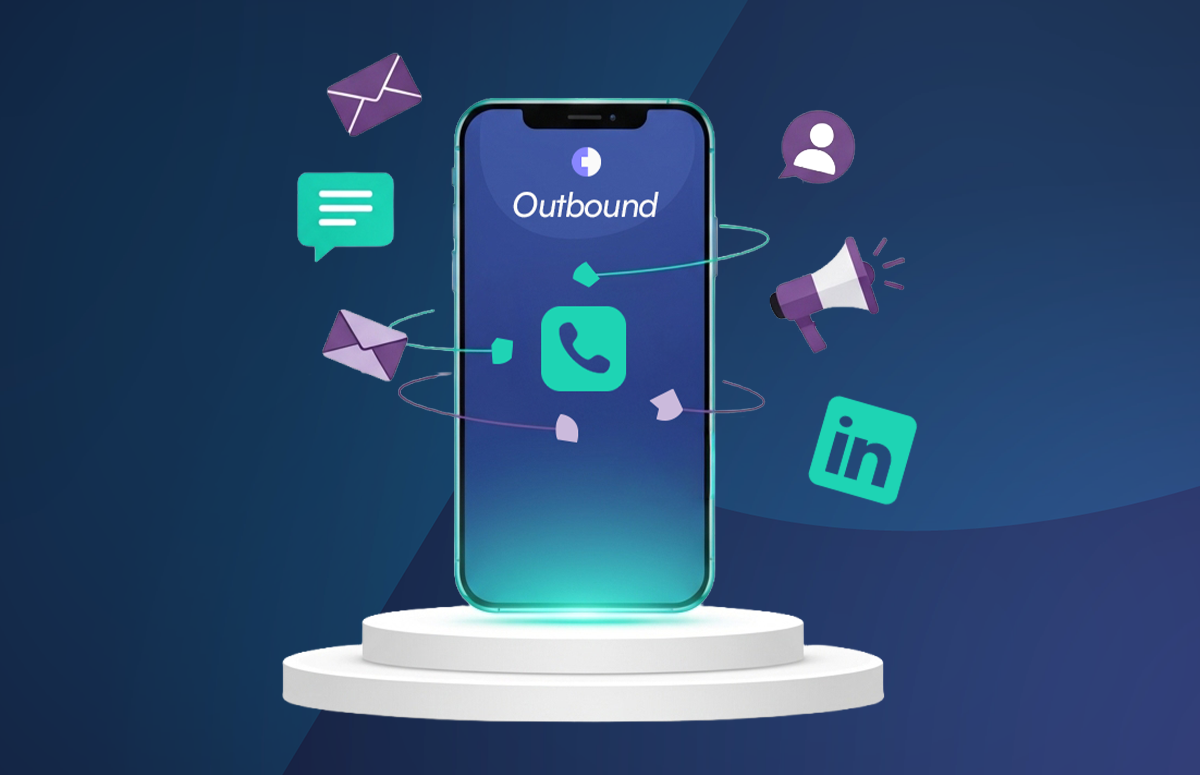Virtual Prospecting And Selling Tips [2026 Guide]
Sales reps today mainly sell through virtual prospecting.
There’s less in-person facetime due to remote work, and the virtual-only connection makes approaching prospective customers challenging.
Want to know how to pass the first checkpoint?
Long story short—
The trick to virtual prospecting and sales is using intent data.
This article offers tips on how to do that.
What are virtual prospecting and sales?
Virtual prospecting identifies potential buyers and contacts them through outbound sales. The aim is to qualify them in or out without meeting them face-to-face.
In virtual prospecting and sales, intent data provides businesses with actionable insight into the online behaviour of key decision-makers.
The virtual breadcrumb trail prospects leave, e.g., web pages they visit or product reviews they read, helps B2B companies determine prospects’ intent to take specific actions and engage those close to making a buying decision.
Sales development reps can also use information about customers’ observed online behaviour to understand the buying process’s lifecycle. This helps them better design virtual prospecting strategies and improve conversion rates.
How to improve virtual prospecting and sales?
Gartner studies show that 61-75% of prospects prefer a rep-free buying experience. Ouch.
It may seem like salespeople are no longer needed in the picture, but that’s not true! A rep can add so much value at all stages of the buying experience.
Sales reps act as trusted advisors, problem solvers, and interpreters of all the data and information about SaaS software.
How does intent data help to prospect in a virtual setting?
In virtual prospecting, intent data not only helps you pass the first checkpoint to book a sales demo, but it also helps you overcome common challenges and prepare for the call.
Intent data facilitates discovering buyers’ needs and buying criteria. Based on prospects’ previous interactions, you can conclude their possible pain points and address them immediately instead of finding them during the call.
It also reveals decision-making processes in your target organisations that are difficult to understand while prospecting remotely. It’s essential if sales cycles are long or complex and when you have to overcome virtual barriers to entry.
In B2B virtual prospecting, intent signals also help you personalise the sales pitch and connect with the prospect more deeply. Winning the buyer’s trust is key to closing high-stakes deals.
Using buyer intent data in this buying process lets you broaden your prospect pool. You can start doing business with better-qualified sales leads because your opportunities are not limited geographically.
%20Hub/Headshots/rico-luis-headshot.webp)
Job role: SDR
Improve close rates with intent signals
Use this play to:
Where does intent data for remote prospecting come from?
You can collect first-party data from your website (e.g., visitors’ IP addresses), social media, or CRM system. But you can buy intent data from external providers if you want to up your virtual prospecting game.
Third-party vendors collect and sell strong intent data based on the content buyers interact with. It can come from three sources:
- Individual websites selling their data with users’ consent
- Bidstream location data obtained through ad exchanges
- Publisher co-ops aggregating their data into larger sets (e.g. Bombora)
What is the best data for online prospecting and sales?
Co-op data is considered the best type of intent data for virtual prospecting. For example:
Bombora, Cognism’s partner, offers data collected from a highly trafficked network of B2B sites, user groups, and product review websites. What’s more important is that they record visitors’ behaviour with their consent.
💡 Learn the difference between co-op and bidstream data.
How does it work?
Let’s take Bombora as an example—
It sets a historical baseline of how much a company typically cares about a given topic. It then looks for research spikes on the topic which indicates stronger intent.
Unlike bidstream data that tracks keywords, Bombora tracks topics. It helps determine the intent behind a website visit and assigns it a relevance score based on factors like:
- Average time on page.
- Scrolling speed.
- Reaching the end of the page.
The deep behavioural data helps you understand prospects’ struggles and provide a meaningful solution that leads to sales.
Start prospecting and selling virtually with Cognism
You can combine Bombora’s behavioural data with Cognism’s sales intelligence to improve prospecting in the virtual landscape.
Here’s how:
When you notice intent influences from your target audience, Cognism can help you get their account information and identify the decision-makers. You’ll get up-to-date data that includes human-verified direct dials and email addresses.
That extra dimension offers many benefits to your business. For example, you can:
- Speed up virtual sales prospecting.
- Improve account-based marketing.
- Prioritise accounts.
- Personalise messaging.
Ways of using intent data for virtual prospecting
Intent data gives you a lot more context before jumping on a virtual discovery call with prospects.
It’s essential for designing effective go-to-market strategies and targeting the right decision-makers. Here are a few use cases to support that claim.
/Virtual%20prospecting%20intent%20data/A-Guide-to-Virtual-Prospecting-With-Intent-Data.webp?width=600&height=600&name=A-Guide-to-Virtual-Prospecting-With-Intent-Data.webp)
1. Reach prospects early in the buying process
In prospecting virtually, intent data helps you reach out to new clients at the right stage of their buyer journey. It also enables you to take a proactive approach and get in front of buyers before they start considering your competitors.
You can also find prospects who aren’t aware of their problem and offer your product or service as their solution.
One of the best ways to do this is by using Potion. Embed short, personalised video messaging directly into your outreach emails to create a lasting impression.
Studies show that incorporating video content increases engagement. And Potion empowers you to leverage the persuasive power of video in your prospecting efforts.
💡 Find out how to use video prospecting for outreach and stand out amongst your competitors.
2. Prioritise prospects close to reaching a purchasing decision
If you get many contacts through outbound lead generation, sales reps will likely struggle to reach out to all of them.
This is where intent signals can help design lead scoring models that prioritise hot leads.
It’s a lead generation game-changer. It lets you virtually prospect to those who have the strongest buying intent.
3. Increase your market awareness to customise a sales pitch
Knowing the virtual prospects’ intent to buy and which solutions they are considering (possibly your competitors’) gives you an advantage you can use during the sales pitch.
For example, you can address the reasons that make your product or service a better option.
It also means you start the cold call knowing the pain points instead of finding them out. You can then personalise your outreach and prepare relevant resources.
4. Upsell and retain customers
Intent data helps businesses find opportunities to upsell extra features in their offers or introduce ones that their client base is actively looking for.
Prospecting virtually with an updated offer based on customer needs allows you to keep clients longer.
You can dig into the data collected in your CRM system. It’s a great source of first-party intent data for virtual prospecting automation. You can revisit older accounts and see if leads disqualified in the past can work out now. They may not have been sales-ready in the past, but may be now!
5. Build targeted social media campaigns
Intent data is key for B2B virtual prospecting on LinkedIn. You will be able to build a targeted account list that matches your ideal customer profile.
The aim is to increase the effectiveness of ad campaigns to reduce lead gen costs.
You’ll be running account-based marketing campaigns in front of a receptive audience that already indicated buying intent.
6. Improve your messaging
To keep your remote prospecting highly relevant, it’s good to know if the account you’re contacting needs to be persuaded with a sales demo or is ready to close the deal.
Intent data gives you all the information about topics and solutions that the prospect is interested in. All you need to do is match whatever stage the prospect is at.
Key takeaways
- Intent data is key to challenges arising during virtual prospecting.
- Combining different types of intent data (firmographic, technographic) is the most effective way of converting more prospects into customers.
- Using intent with sales intelligence solutions adds an extra accuracy layer that helps you discover a perfect business match.

About Daisy Shevlin
Lorem ipsum dolor sit amet, consectetur adipiscing elit, sed do eiusmod tempor incididunt ut labore et dolore magna aliqua. Ut enim ad minim veniam, quis nostrud exercitation ullamco laboris nisi ut aliquip ex ea commodo consequat.
Follow on LinkedIn

/Cold%20calling%20strategy/cold-calling-strategy-card.webp)

